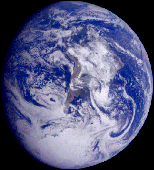|
|
|
|
|
|
||
 |
||||||
Today we are aware of some 40 different molecular species in the atmospheric inventory, all of which play a role in the chemistry of the atmosphere and in its interaction with the Sun's radiation. Some of these gases are present only as a result of our activities and are a sensitive indicator of the extent to which the environment is being perturbed. The fact that these gases have the potential for seriously changing the conditions at the surface of our planet, reinforces the realization that we can no longer view humanity and its environment as separate entities. While our primary concern in the past may well have been to protect ourselves from the environment, today we must also be concerned with protecting the environment from the detrimental effects of our own activities. In the past decade, research into many interrelated questions about the Earth's atmosphere has made scientists aware of the complexity of the processes that affect it, and has drawn attention to the need for more detailed studies in order that these processes can be better understood. This, in turn, has shown the need for a means by which global measurements can be made of the composition and temperature of the atmosphere and their variability. With the advent of the space shuttle, a suitable platform was available from which such measurements could be made. Now all that was needed was to provide a sensor capable of making the required measurements under the conditions of orbital flight. ATMOS (Atmospheric Trace Molecule Spectroscopy) - the experiment and the sensor - was the answer to our need.
Other Related Home Pages and References
|

